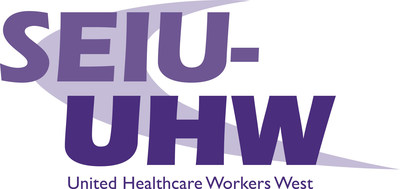|
01.05.2020 21:21:00
|
SEIU Survey: Many Stanford Employees Whose Salaries are Being Cut Live on the Economic Edge Even as They Work Amid Extreme Wealth
PALO ALTO, Calif., May 1, 2020 /PRNewswire/ -- A survey of hundreds of frontline Stanford Health Care employees – all of whom face a 20% pay cut in the middle of the coronavirus pandemic – shows that their salaries keep them on the economic edge, mainly living paycheck to paycheck with most unable to afford a $500 emergency expense without using credit.

The financial position of these workers is in direct contrast with where they work – one of the richest areas of the United States, with a medium home value of $3.1 million, according to Zillow.
Despite the vulnerable state of their workers, Stanford Health Care abruptly announced last week that it is requiring its employees to take 12 furlough days over a 10-week period, which amounts to a 20 percent pay cut during that time, euphemistically calling the move a "shared sacrifice." Many of the workers affected by the cut make between $55,000 and $65,000 a year, and the pay reduction will make it difficult for them to pay their rent, buy groceries and take care of their families.
"We do our best to treat patients every day, and most of us love what we do, but to put this added economic strain on people who make $50,000 or $60,000 a year is heartless, especially as we all take on the added risk of caring for COVID-19 patients," said Amanda Arrambide, an OB technician in Labor and Delivery. "Even though we work in one of the richest areas of the country, we are the everyday face of America when it comes to our incomes and the way we live our lives. It's tough."
The survey was conducted among 809 workers by the Service Employees International Union – United Healthcare Workers West, although not every worker answered every question. The findings showed a workforce that is just keeping its head above water and facing enormous economic and lifestyle pressures.
Among the findings:
Finances
- 81 percent say they could not handle a $500 emergency expense without using credit (769 respondents)
- 53 percent said that they have been unable to cover a rent or mortgage payment in the last three years because they couldn't afford it (765 respondents).
- 55 percent say they regularly work more than 40 hours a week to make ends meet (768).
- 65 percent say they do not expect to be able to afford to retire at age 67 (756).
Housing
- Workers report an average monthly housing cost of $2,070, which is 41 percent of gross income for a worker making $60,000 a year – though many live far away from work to keep their housing expenses down (634).
- 80 percent live with other people, such as friends and family (770).
- 77 percent hope to own a home some day, with 19 percent who already do (776).
Commuting
- Workers report an average commute time of 62 minutes. 91 percent (689) have an average commute time of 30 minutes or more, 47 percent (359) an hour or more, 15 percent (113) two hours or more, and 2.5 percent (19) three hours or more (total of 760 workers responding).
- Workers report spending an average of $267 a month on gas and parking, 5 percent of their gross income for a worker making $60,000 a year (702).
- 62 percent say their commute negatively affects their physical and emotional health (754).
Stanford employees said the furloughs have a different impact on frontline workers making $60,000 a year, than they do on the CEO, who makes approximately $3 million. A 20 percent cut for the CEO over 10 weeks would mean he'd have to live on just $2.86 million this year, assuming he is not made whole with a bonus at the end of the year, which executives get but not frontline staff. In 2018, the CEO got a bonus of $768,000.
The workers also pointed out that if the CEO took a temporary cut in salary to $2 million, it would be enough to avoid furloughs for a large majority of the health system's housekeepers. And if the chief operating officer, who made $2 million in 2018, took a temporary $350,000 pay cut, he could stop the 12 days of furloughs for all 131 lab assistants.
In an open letter to the leadership of Stanford Health Care, now signed by more than 500 workers, employees are asking Stanford to modify their position to protect lower wage workers.
SEIU-United Healthcare Workers West (SEIU-UHW) is one of the largest unions of hospital workers in the United States, with 97,000 members. Learn more at www.seiu-uhw.org.
![]() View original content to download multimedia:http://www.prnewswire.com/news-releases/seiu-survey-many-stanford-employees-whose-salaries-are-being-cut-live-on-the-economic-edge-even-as-they-work-amid-extreme-wealth-301051134.html
View original content to download multimedia:http://www.prnewswire.com/news-releases/seiu-survey-many-stanford-employees-whose-salaries-are-being-cut-live-on-the-economic-edge-even-as-they-work-amid-extreme-wealth-301051134.html
SOURCE SEIU-United Healthcare Workers West
 Der finanzen.at Ratgeber für Aktien!
Der finanzen.at Ratgeber für Aktien!
Wenn Sie mehr über das Thema Aktien erfahren wollen, finden Sie in unserem Ratgeber viele interessante Artikel dazu!
Jetzt informieren!